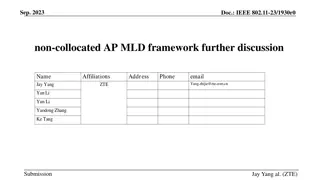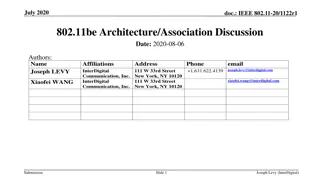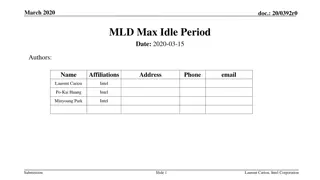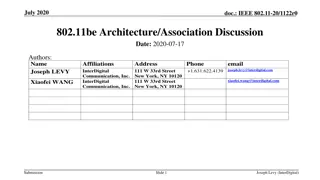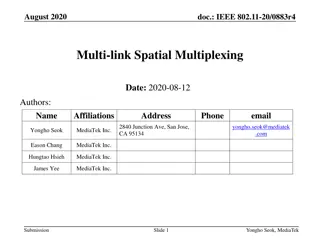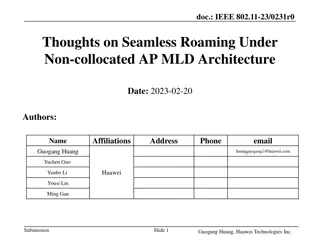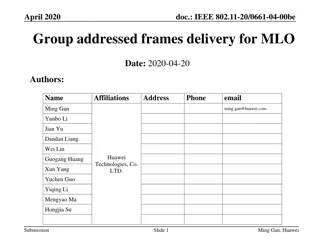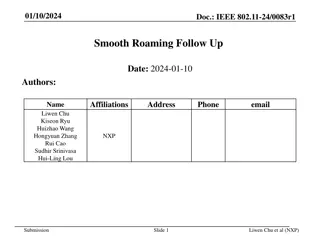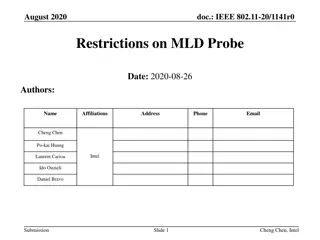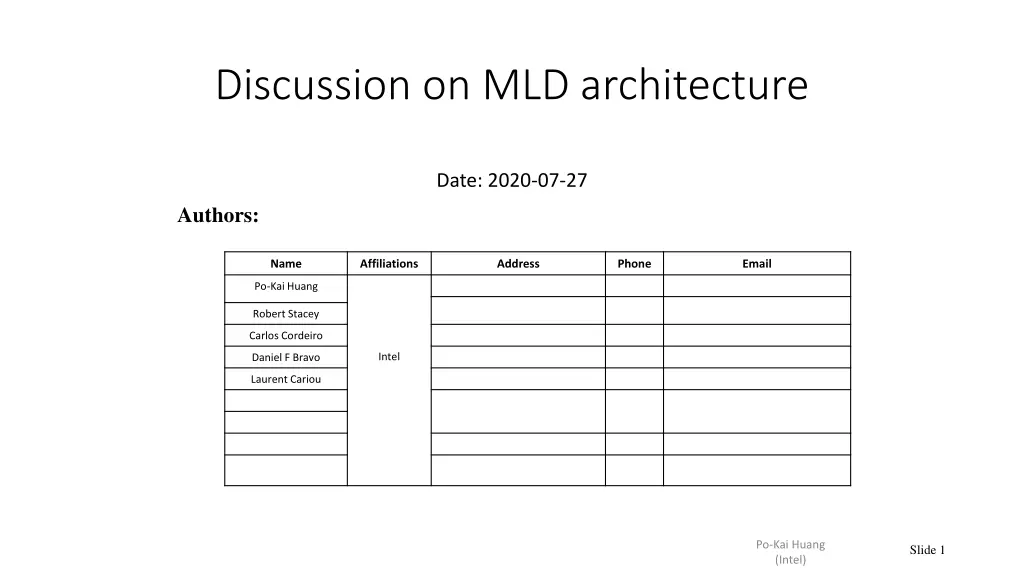
MLD Architecture Overview and Protocol Design Directions
Explore the architecture of Multi-link devices (MLD) in networking and delve into the protocol design guidelines for MLD operations, including MLD association, disassociation, authentication, and more.
Download Presentation

Please find below an Image/Link to download the presentation.
The content on the website is provided AS IS for your information and personal use only. It may not be sold, licensed, or shared on other websites without obtaining consent from the author. If you encounter any issues during the download, it is possible that the publisher has removed the file from their server.
You are allowed to download the files provided on this website for personal or commercial use, subject to the condition that they are used lawfully. All files are the property of their respective owners.
The content on the website is provided AS IS for your information and personal use only. It may not be sold, licensed, or shared on other websites without obtaining consent from the author.
E N D
Presentation Transcript
Discussion on MLD architecture Date: 2020-07-27 Authors: Name Affiliations Address Phone Email Po-Kai Huang Robert Stacey Carlos Cordeiro Intel Daniel F Bravo Laurent Cariou Po-Kai Huang (Intel) Slide 1
Passed Motion Multi-link device (MLD): A device that has more than one affiliated STA and has one MAC SAP to LLC, which includes one MAC data service. NOTE 1 The device can be logical. NOTE 2 It is TBD for a MLD to have only one STA. NOTE 3 Whether the WM MAC address of each STA affiliated with the MLD is the same or different is TBD. AP multi-link device (AP MLD): A MLD, where each STA affiliated with the MLD is an AP. Non-AP multi-link device (non-AP MLD): A MLD, where each STA affiliated with the MLD is a non-AP STA. A MLD has a MAC address that singly identifies the MLD management entity. For example, the MAC address can be used in multi-link setup between a non-AP MLD and an AP MLD.
General direction for protocol design Based on the agreement in SFD, we are heading toward the following direction STA => MLD AP => AP MLD Non-AP => non-AP MLD SME => MLDME STA (re)association => MLD (re)association through multi-link (re)setup procedure and reuses (re)association request/response STA disassociation => MLD disassociation through multi-link tear-down procedure and reuses disasociation frame STA authentication => MLD authentication and reuses authentication frame STA level 4-way handshake => MLD level 4-way handshake and resues EAPOL key frame STA level BA agreement => MLD level BA agreement and reuses ADDBA request/response Basically, pushing STA level operation like authentication/association/key derivation/BA negotiation to MLD level and replace STA MAC address with MLD MAC address for the end point of operation
Starting point for the reference model IEEE 802.1X Authenticator or Supplicant MLD Management Entity SMEs RSNA Key Management MLME SAP MAC sublayer Management entity 802.1X MAC SAP Common MLD entity MAC Sublayer MAC Sublayer PHY Sublayer Management Entity PHY Sublayer Management Entity PLME SAP PHY PHY PLME SAP

